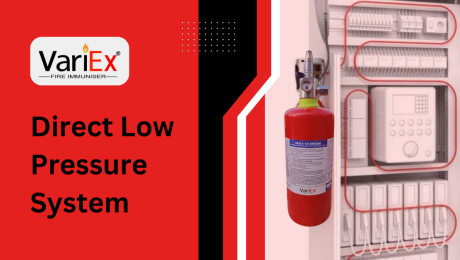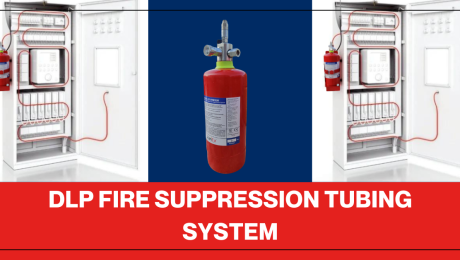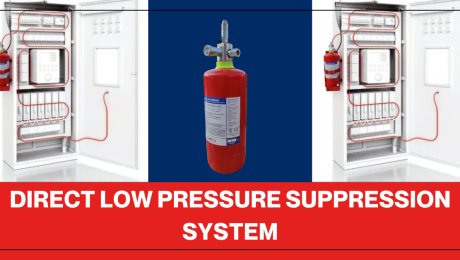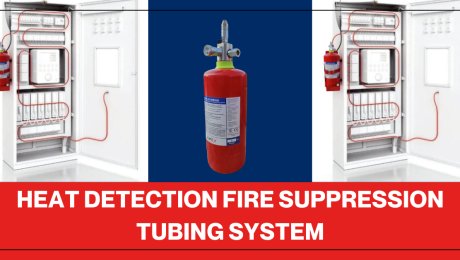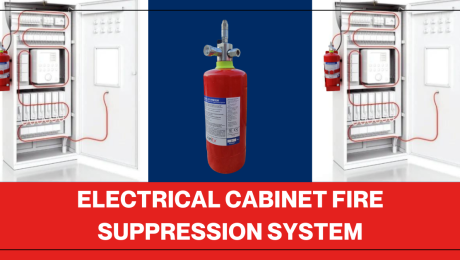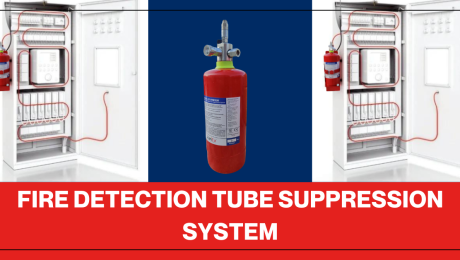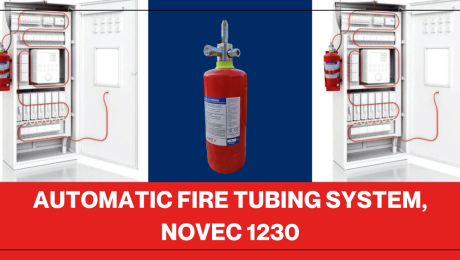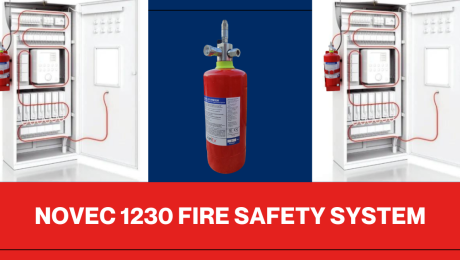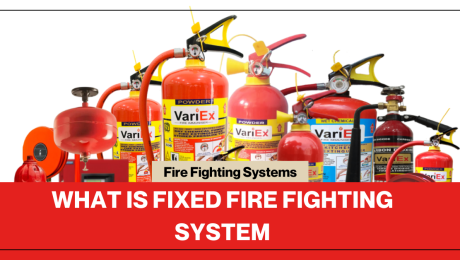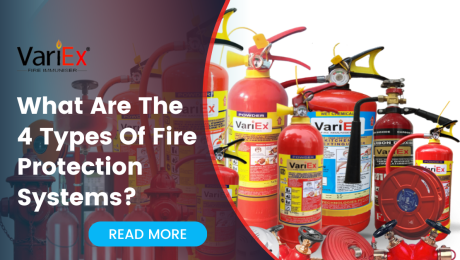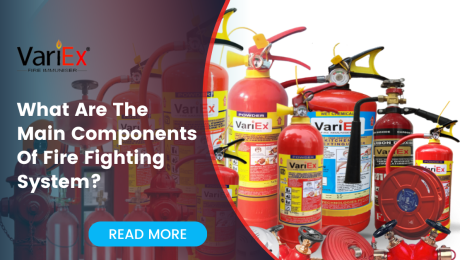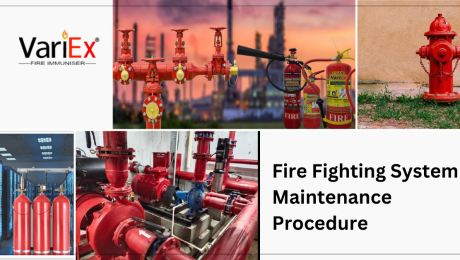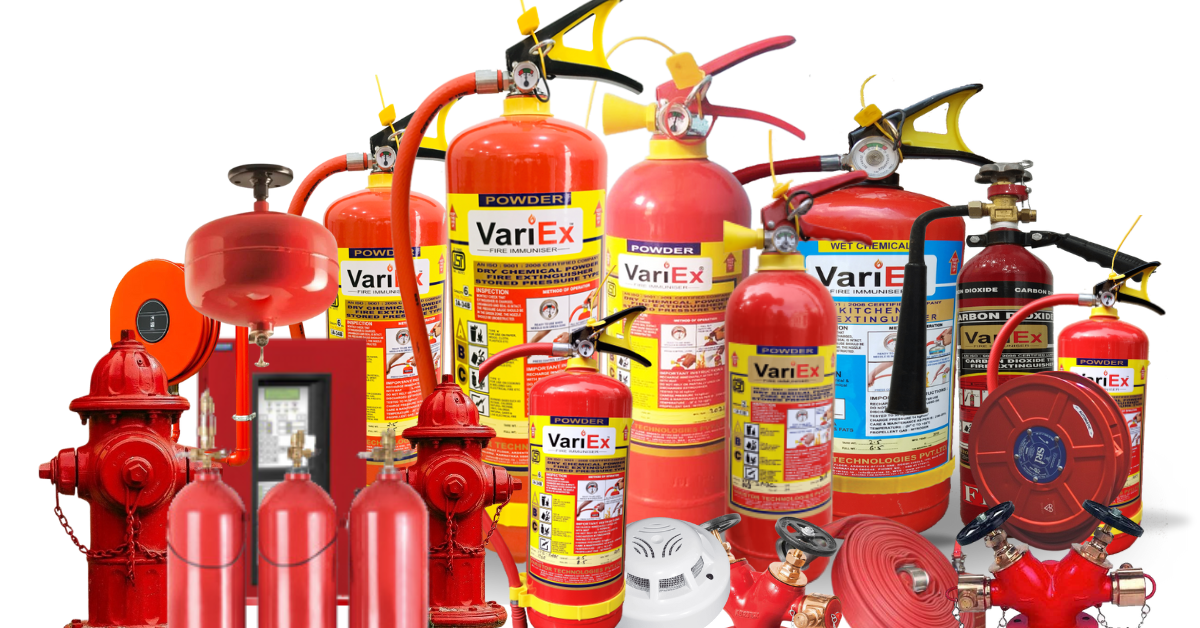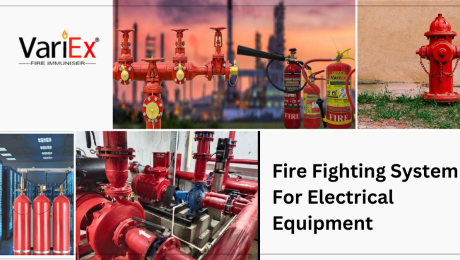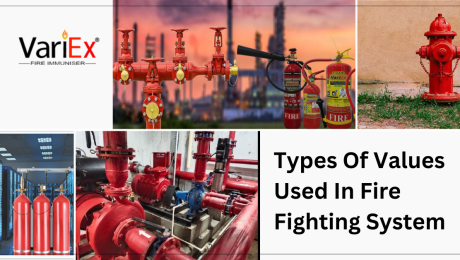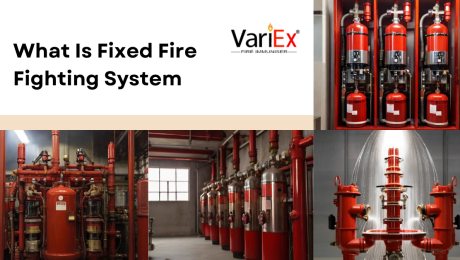Fire Suppression Systems are crucial components of comprehensive fire safety strategies, designed to swiftly and effectively control or extinguish fires in various environments. These systems go beyond traditional fire protection measures, providing rapid response and minimizing potential damage.
Key Features:
- Diverse Suppression Agents:
- Fire Suppression Systems employ a range of agents, including water, foam, gases, and chemicals, tailored to specific fire types.
- Automatic Activation:
- These systems activate automatically upon detecting fire indicators, ensuring immediate response without human intervention.
- Precision and Efficiency:
- Advanced technology allows for precise targeting of fire sources, minimizing collateral damage while efficiently suppressing flames.
- Versatility:
- Suitable for diverse settings, from residential and commercial spaces to industrial facilities.
- Customizable to specific fire risks and environmental factors.
Benefits:
- Occupant Safety:
- Fire Suppression Systems prioritize the safety of occupants, providing a quick and efficient response to potential fire threats.
- Asset Protection:
- Swift activation reduces property damage, protecting assets and minimizing financial losses.
- Business Continuity:
- The rapid suppression of fires supports business continuity by minimizing downtime and operational disruptions.
- Environmental Considerations:
- Some systems utilize eco-friendly suppression agents, addressing environmental concerns.
Conclusion: Investing in a Fire Suppression System is a proactive measure to ensure the safety of occupants, protect assets, and mitigate potential fire-related damages. These systems offer a reliable and efficient response, making them indispensable for safeguarding various settings against the destructive impact of fires.
Direct Low Pressure System
- Published in Fire Fighting System, Fire Suppression
DLP Fire Suppression Tubing System
- Published in Fire Fighting System, Fire Suppression
Direct Low Pressure Suppression System
- Published in Fire Fighting System, Fire Suppression
Heat Detection Fire Suppression Tubing System
- Published in Fire Fighting System, Fire Suppression
Electrical Cabinet Fire Suppression System
- Published in Fire Fighting System, Fire Suppression
Fire Detection Tube Suppression System
- Published in Fire Fighting System, Fire Suppression
Automatic Fire Tubing System, NOVEC 1230
- Published in Fire Fighting System, Fire Suppression
NOVEC 1230 Fire Safety System
- Published in Fire Fighting System, Fire Suppression
What Is Fixed Fire Fighting System
What Are The 4 Types Of Fire Protection Systems?
What Are The Main Components Of Fire Fighting System?
Fire Fighting System Maintenance Procedure
Regular maintenance of fire fighting systems is essential to ensure their continued functionality and reliability in the event of a fire emergency. This guide outlines the key procedures involved in maintaining fire suppression systems to mitigate risks and protect lives and property.
1. Scheduled Inspections:
- Conduct scheduled inspections of all components of the fire fighting system, including control panels, piping, nozzles, detectors, fire alarms system, and fire extinguishers.
- Inspections should be performed by qualified technicians according to manufacturer guidelines and regulatory requirements.
2. Functional Testing:
- Perform functional tests of the entire fire fighting system to verify proper operation and response.
- Test alarms, detectors, and suppression equipment to ensure they activate as intended.
- Simulate fire scenarios to assess the system’s effectiveness in detecting and suppressing fires.
3. Inspection of Components:
- Inspect piping, valves, and nozzles for signs of corrosion, leaks, or damage.
- Check detectors and alarms for proper positioning, cleanliness, and functionality.
- Verify that control panels and electrical connections are secure and free from defects.
Fire Fighting System For Electrical Equipment
In today’s technologically driven world, the reliance on electrical equipment is ubiquitous, spanning industries from manufacturing plants to data centers and commercial buildings. However, alongside the convenience and efficiency these systems provide, there exists a persistent risk of electrical fires. These fires, often swift and devastating, pose significant threats to personnel safety, property integrity, and business continuity. To address this critical issue, the implementation of comprehensive fire fighting systems specifically tailored for electrical hazards is paramount.
Types Of Valves Used In Fire Fighting System
In the realm of fire safety, the effectiveness of fire fighting systems relies heavily on the proper functioning of various valves. These valves play a critical role in controlling the flow of water, directing it to the areas where it’s needed most during fire suppression efforts. This article delves into the different types of valves used in fire fighting systems, highlighting their functions and importance in ensuring swift and effective response to fires.
What Is Fixed Fire Fighting System
A fixed fire fighting system refers to a comprehensive fire suppression system installed in a building or an industrial facility. It is designed to automatically detect and extinguish fires in their early stages without human intervention. This system typically consists of a combination of sensors, detectors, valves, pipes, and nozzles strategically placed throughout the area to provide effective fire protection. Examples of fixed fire fighting systems include sprinkler systems, gas suppression systems, water mist systems, and foam systems. These systems are crucial in preventing the rapid spread of fire and minimizing damage to property, as well as ensuring the safety of occupants and employees. It is essential to regularly inspect, maintain, and test these systems to ensure their proper functioning when needed.


